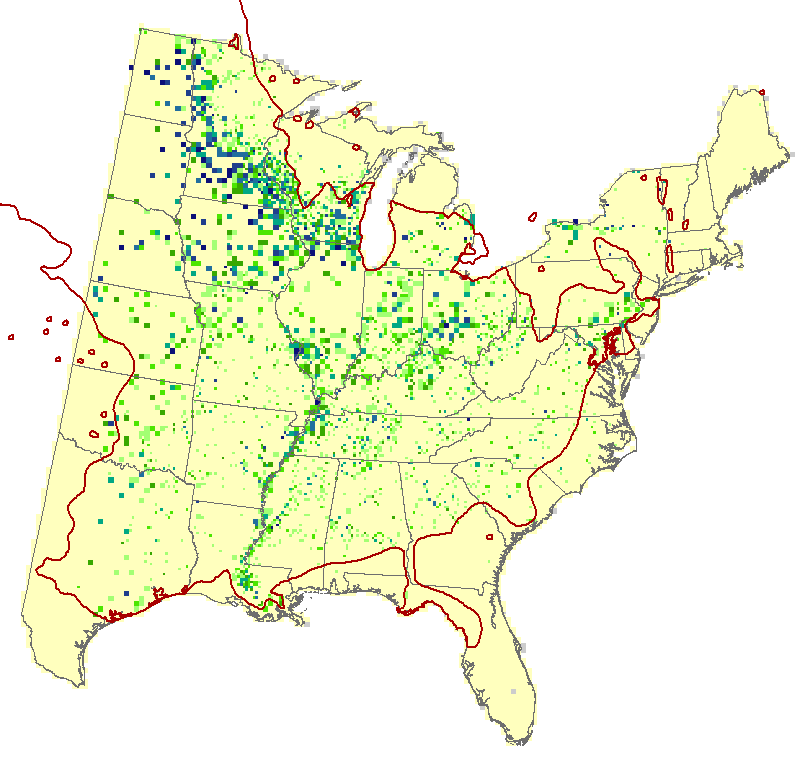boxelder (Acer negundo)
Model Reliability: Low


| GCM SCENARIO | % Area Occ | Ave IV | Sum IV | Future/Current IV |
|---|---|---|---|---|
| Actual | 9.7 | 8.9 | 25444 | N/A |
Regional Summary Tree Tables
Summaries for tree species are available for a variety of geographies, in both PDF and Excel format. These summaries are based on Version 4 of the Climate Change Tree Atlas
Interpretation Guide
Boxelder is a widely distributed (12.4% of area), sparse, but high IV species (especially in the western part of region), but with a low reliable model suggesting a small increase in suitable habitat (RCP 8.5). It is highly adapted to the changing climate, yielding a very good (RCP 8.5) or good (RCP 4.5) overall capability to accommodate future climate trends. The SHIFT model also suggests it to be a very good species for infill planting, and the wide distribution also allows SHIFT to suggest expansion from current locations over a 100-year period.
Family: Aceraceae
Guild: opportunistic, fast-growing understory tolerant
Functional Lifeform: small to medium-size deciduous tree
| 7.4 | 2.39 |
| 2.06 |  |
MODFACs
What traits will impact boxelder's ability to adapt to climate change, and in what way?:
Primary Positive Traits
Seedling establishment Dispersal Drought Shade tolerance Temperature gradient
Primary Negative Traits
Fire topkill

